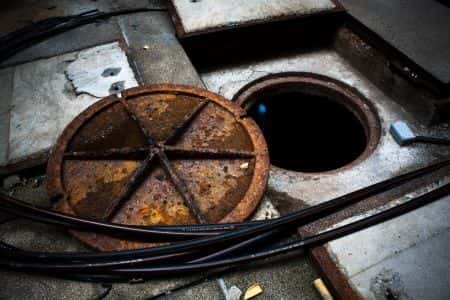This case involves a construction company that had been hired to build an industrial park with an office complex and landscaping that included a large plastic-lined pond. The pond’s water was to be controlled by opening and closing a gate valve in a 12-inch diameter drain pipe. The drain pipe was installed on a concrete pad at the bottom of a manhole near the edge of the pond. The manhole was 24 feet deep with an inside diameter of 4 feet and a 24-inch opening. A construction worker received an order from his supervisor to enter the manhole and close the gate valve so that they could prepare to fill the pond. There was no environmental testing within the manhole. The atmosphere had not been tested or ventilated before the worker entered it. When the worker entered the manhole, he collapsed in about 12 inches of water. The supervisor called 911 and several firefighters entered the manhole and removed the worker. The worker was later pronounced dead at the scene by the county coroner. Four hours later, the manhole atmosphere was tested by a private laboratory and the test results showed that there were oxygen levels from 18.5% to 20% and methane levels at 300 to 600 parts per million (ppm) at depths from 12 to 15 feet. The medical examiner later listed the worker’s cause of death as asphyxiation from lack of oxygen.
Question(s) For Expert Witness
1. What could cause a construction worker in a manhole to die from asphyxiation?
Expert Witness Response
Usually, construction workers are not required by their supervisors to enter manholes. If a construction worker is doing a job that requires him to enter a manhole, the construction company is usually required to have a confined space entry policy. A construction company that requires workers to enter manholes must usually conduct formal training of employees about the atmospheric hazards of working in a manhole. There must usually be a competent person on-site that is trained in the proper safety procedures of working in manholes and the construction company must also make sure that workers wear adequate equipment for a confined space entry. The most dangerous conditions of working in a manhole result from oxygen deprivation and asphyxiation from gas fumes. Proper safety procedures for a worker in a manhole include removing any sludge or sewer debris that could give off toxic gases and using a ventilating blower to blow fresh air into the manhole to make sure that the workers have oxygen to breathe. The construction company in this case should have required the worker to wear a breathing apparatus and also wear a safety harness and rescue ropes before he entered the manhole.
About the author
Inna Kraner, J.D.
Inna Kraner, J.D., is currently Associate Director of Development - William S. Richardson School of Law. She worked in client development at Proskauer Rose LLP, and held various marketing positions at Skadden, Arps, Slate, Meagher & Flom LLP. She has experience litigating corporate, industrial, financial, regulatory, and controversy matters. Inna graduated with a J.D. from Boston College Law School and a B.A. from Brandeis University.



